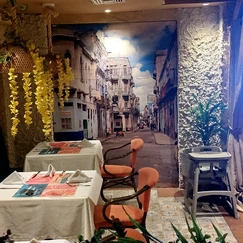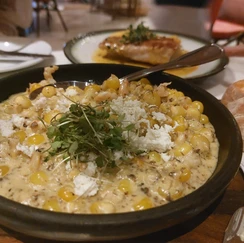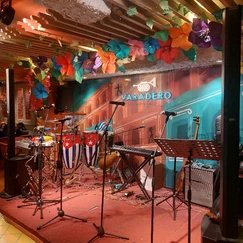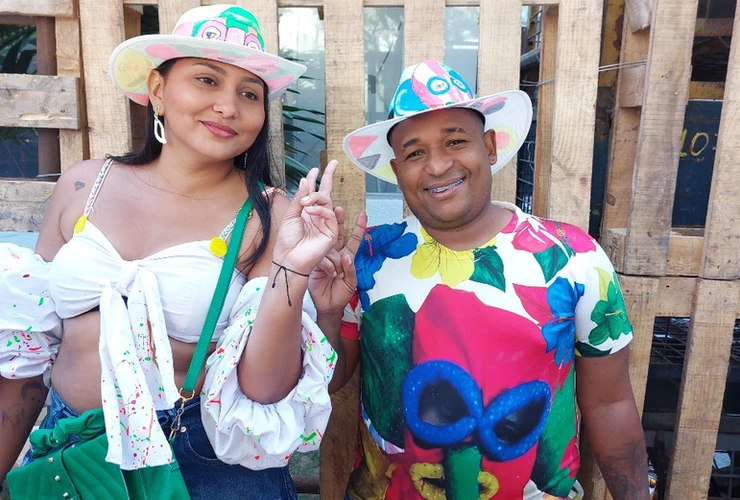
Although Halloween is not my forte, I gave in to the group’s desire to experience Carnival in Colombia’s official Carnival city, and found myself in Barranquilla, a chaotic and rather ugly city, the day before Carnival began.
Colombia’s fourth largest city is a port city located on the delta of the vast Río Magdalena. On the bus ride from Cartagena, you get an idea of the poverty that prevails in the shantytowns that are located in lakes of stagnant water, while a bunch of children play next to them.

Entering Barranquilla, you see that the doors and windows of the houses on the left and right of the street are protected with iron bars, which shows the country’s wounded past, apparently as a result of the civil war, which lasted over 50 years and ended in 2016, with the Peace Agreement between the government and the leaders of the Revolutionary Armed Forces of Colombia (FARC) and left behind more than 200,000 dead – the majority of whom were civilians -, 25 thousand missing and 5.7 million displaced citizens. It officially ended, since unofficially murders, rapes, kidnappings, disappearances, forced displacements and torture continue today.
The birthplace of Colombian pop goddess Shakira and Sofia Vergara, it may be a working-class city, but it hosts the country’s biggest party, which has been on UNESCO’s Intangible Cultural Heritage list since 2008. It’s the second-largest carnival after Rio, with over 1 million people flocking to the city’s neighborhoods and streets, which are bursting with rhythm, dance and colour.
Carnival is a celebration of the region’s ethnic diversity, which includes roots in Africa, as well as European and indigenous influences.
The streets are filled with painted faces, Barranquilleros twirl, dance danza de congos and cumbia, which date back to the colonial era when the first slaves were brought to the continent from Africa.
The parade starts at Plaza de la Paz where the mayor of Barranquilla gives the Carnival Queen the key to the city for the carnival, while the events at the “Cumbiodromo – Vía 40”, include the Battle of the Flowers (where young women in colorful costumes throw freshly cut flowers into the crowds), the Orchestra Festival and the Parade of the Big Bands and more. La Reina (the Carnival Queen) is chosen for her style, charm and dancing skills and belongs to one of the upper classes of Barranquilla.
We secured seats in the palcos, with an unobstructed view and I can say that the biggest impression was the fact that the parade includes floats with (real) police officers!
Once the parades are over, the party continues in the barrios or neighborhood streets, while preparations for next year begin almost as soon as the hangovers have subsided and the streets have been cleared.
All the taxi drivers we called via Uber told us not to go south of the city, let alone to any of the parties, without a local we know or trust. Petty theft is possible, so it’s best to stay in safe places.
Aside from the carnival, a big disappointment was the fact that the Museo del Caribe, which according to travel guides is “a fantastic place to learn all about the colorful past of the region that begins with the Kamash Indians who occupied the area before the 16th century, before the Spanish settlement and their colonial rule,” was closed, dusty, and abandoned.



Finally, the city has restaurants and shopping malls, with options for food and shopping, although communication is always difficult if you don’t speak Spanish. We tried a wonderful atmosphere and food in Varadero, while the best street food was found in Narcobollo.

